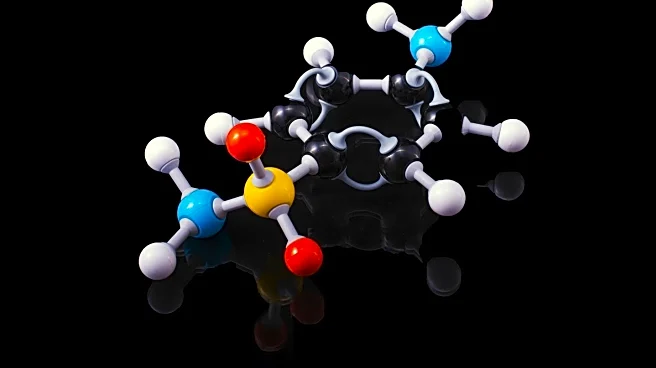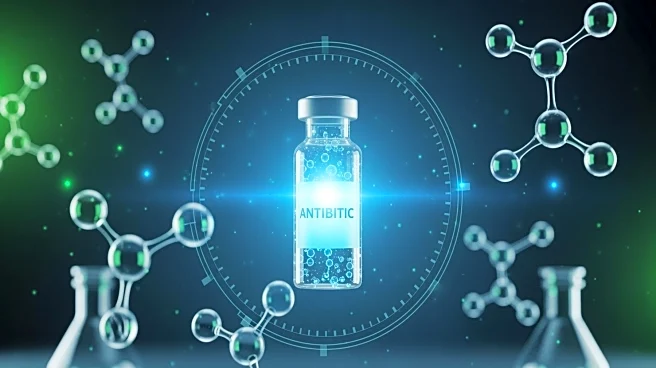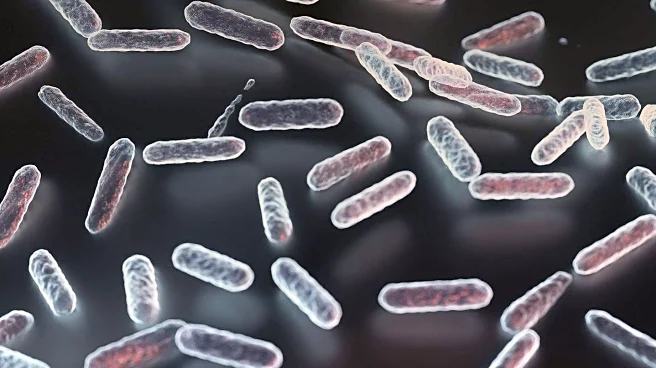What's Happening?
Scientists from the University of Warwick and Monash University have discovered a new antibiotic, pre-methylenomycin C lactone, which is 100 times more potent than existing drugs against superbugs such
as MRSA and VRE. This compound was found as an intermediate in the natural production process of methylenomycin A, a known antibiotic. The discovery was made by deleting biosynthetic genes, revealing two previously unknown intermediates with significant antimicrobial activity. The research, published in the Journal of the American Chemical Society, highlights the potential of pre-methylenomycin C lactone to combat drug-resistant infections, as it shows no signs of resistance under conditions that typically lead to resistance against vancomycin.
Why It's Important?
The discovery of pre-methylenomycin C lactone is significant in the fight against antimicrobial resistance (AMR), which poses a serious threat to global health. With over 1.1 million lives lost annually to AMR, the development of new antibiotics is crucial. The World Health Organization has warned about the scarcity of antibacterials in the pipeline, as the financial rewards for developing new antibiotics are limited, leading to reduced investment from pharmaceutical companies. This new antibiotic offers hope for addressing high-priority pathogens like VRE, potentially reducing the reliance on last-resort treatments such as vancomycin.
What's Next?
The next steps involve pre-clinical testing of pre-methylenomycin C lactone. Researchers have developed a scalable synthesis method for the compound, enabling the creation of diverse analogues to explore its structure-activity relationship and mechanism of action. The Centre to Impact AMR at Monash University provides a platform for advancing this promising antimicrobial. If successful, this antibiotic could significantly impact the treatment of drug-resistant infections, offering a new direction for antibiotic discovery and potentially saving many lives.
Beyond the Headlines
This discovery suggests a new paradigm for antibiotic discovery by testing intermediates in natural compound pathways. It highlights the importance of exploring familiar organisms for hidden antibiotics, as demonstrated by the Streptomyces coelicolor bacterium. The research underscores the need for innovative approaches to combat AMR, which could lead to more resilient antibiotics with reduced resistance potential.












